
Weldability classification systems. Download Table
Weldability. Most nickel alloys can be fusion welded using gas shielded processes like TIG or MIG. Of the flux processes, MMA is frequently used but the SAW process is restricted to solid solution alloys and is less widely used. Solid solution alloys are normally welded in the annealed condition and precipitation hardened alloys in the solution.

Weldability chart of several Nibased Superalloys in terms of their Al
If there is no specification, ask if the material is "plain carbon steel" or "mild steel," or (at the other extreme) "tool steel.". In most cases, the former materials are relatively easy to weld and somewhat "forgiving.". The latter materials require extreme care if they are to be welded satisfactorily.
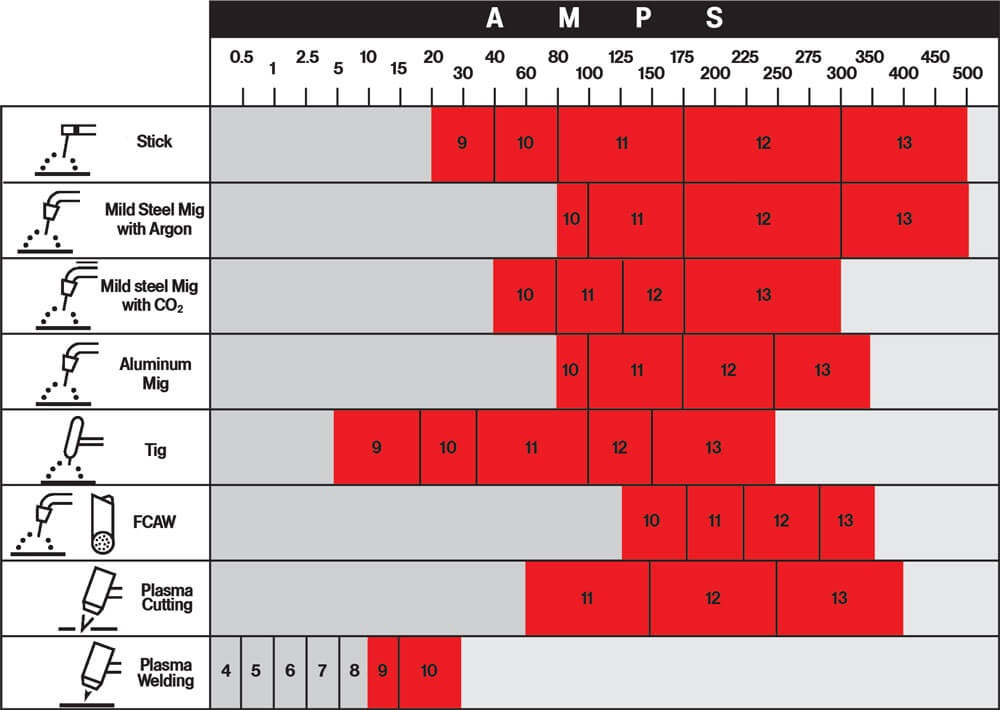
What Do Welding Shade Numbers Mean? What Shade Is Safe In 2021?
Posters & Charts View posters and charts with technical guidance on handling, storage and applications for Hobart Brothers filler metal solutions. We offer a variety of helpful welding charts and guides that you can reference online, or download as a PDF to print, distribute, or post for your welding team.

Dissimilar Welding Chart Stainless Steel Transition Metals
Weldability. Application. Low carbon steel. Contains less than 0.3 wt.% carbon and 0.4 wt.% manganese. Also exhibits good weldability as long as impurities are kept low. Any welding process is suitable for low carbon steel. It is suitable for decorative products such as lamp posts. An example is the BS 970-1 Grade 07M20 normalized steel.

Weldability assessment for nickelbased superalloys (adapted with
1.1 Introduction to Welded Wire Reinforcement. Welded wire reinforcement (WWR) is a prefabricated reinforcement consisting of high strength, cold-drawn or cold-rolled wire welded together in square or rectangular grids. Each wire intersection is electrically resistance-welded by a continuous automatic welding machine.

Stainless Steel Dissimilar Welding Chart Hobart Brothers
Download Citation | Weldability charts for constructional steels | The weldability of materials is still a poorly understood concept; a quantitative assessment remains elusive. The variables.
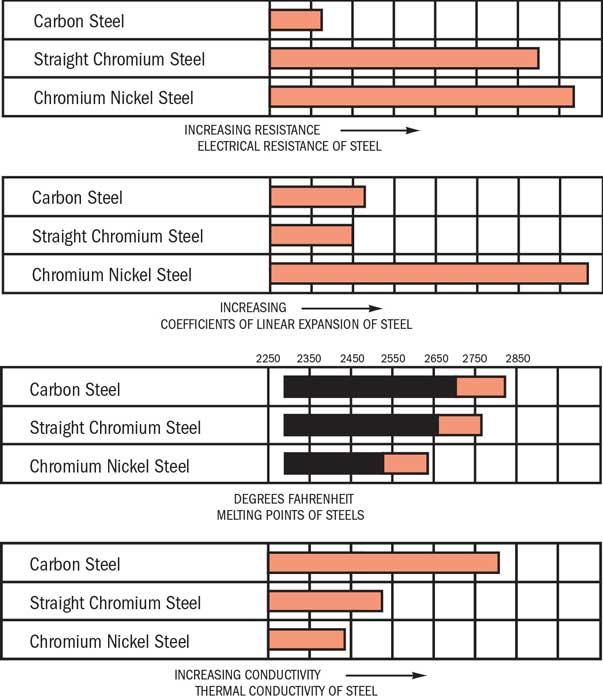
Welding stainless steel right
Weldability charts for constructional steels . J C Ion1 and M F Ashby2. 1 Division of Materials Science, Luleå University of Technology, SE-97187 Luleå, Sweden . 2 Department of Engineering, University of Cambridge, Cambridge CB2 1PZ, UK . E-mail: [email protected] . Abstract.The weldability of materials is still a poorly understood concept; a quantitative
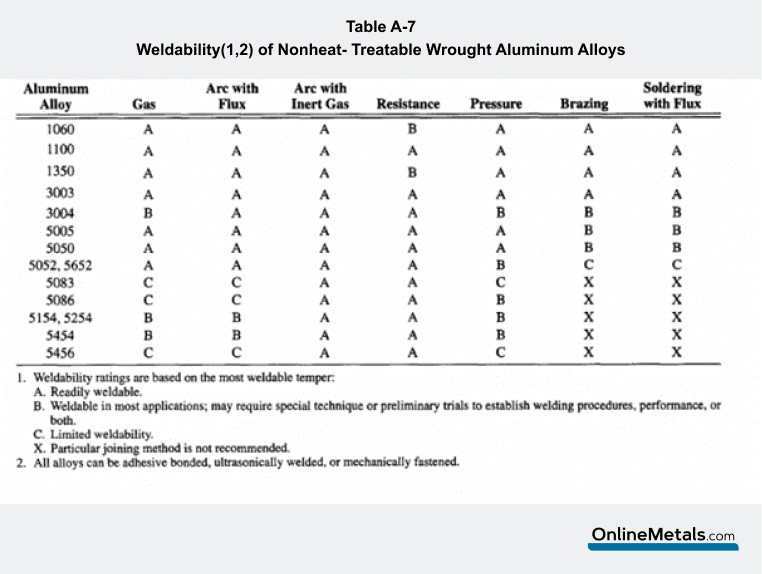
Weldability of Aluminum
Need Volume Pricing? Learn about welding steel the different types of steel, their carbon contents and different weldability of steel properties at OnlineMetals.com.

Laser weldability chart for possible polymer combinations (reproduced
The weldability, also known as joinability, [1] of a material refers to its ability to be welded. Many metals and thermoplastics can be welded, but some are easier to weld than others (see Rheological weldability ). A material's weldability is used to determine the welding process and to compare the final weld quality to other materials.

Pin on dimecsa works
Job Knowledge 21. Aluminium and its alloys are used in fabrications because of their low weight, good corrosion resistance and weldability. Although normally low strength, some of the more complex alloys can have mechanical properties equivalent to steels. The various types of aluminium alloy are identified and guidance is given on fabricating.
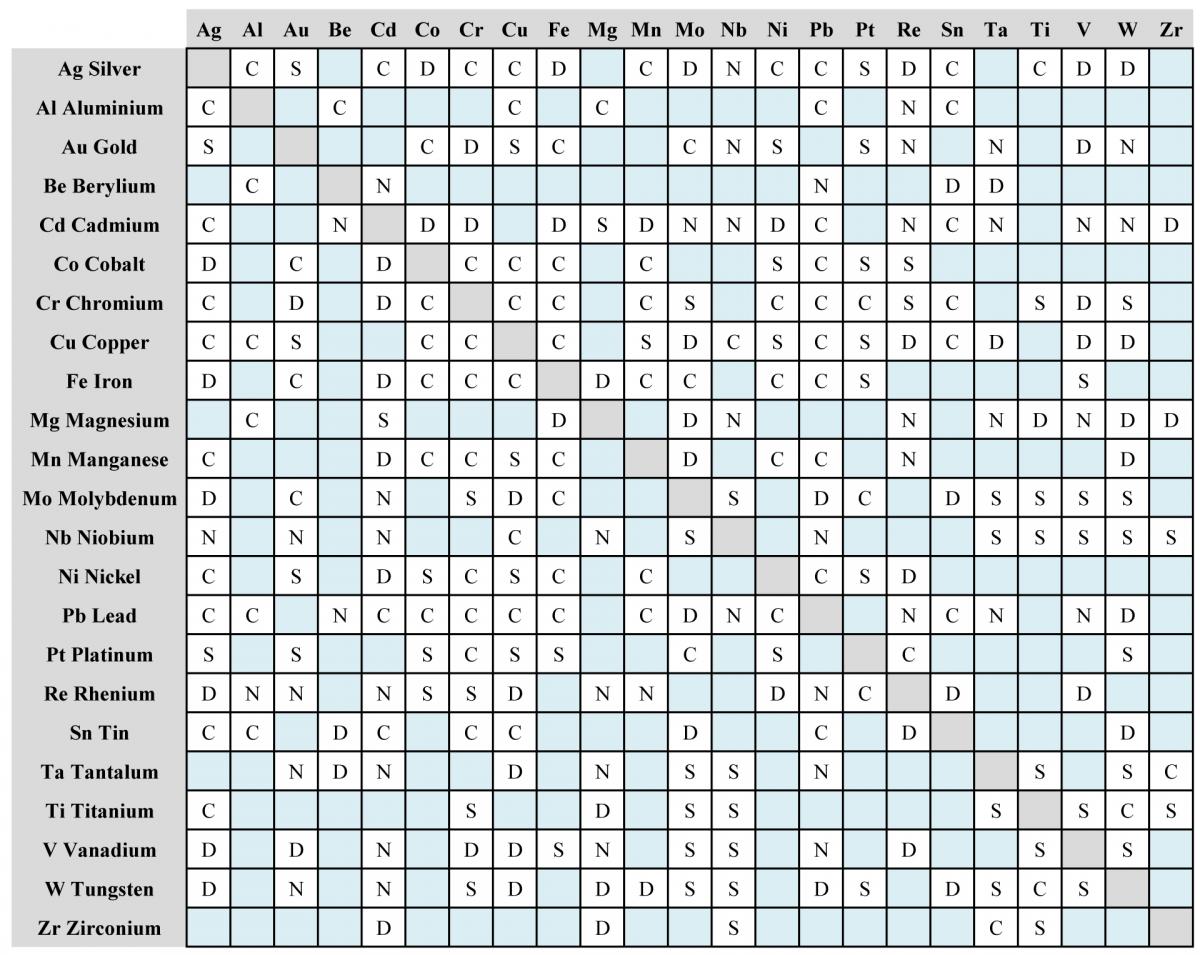
EB Weld Advantages Material Weldability PTRPrecision Technologies, Inc.
Specifications Welding Specifications for EB Welding NADCAP AS9100D / ISO 9001:2015 ISO 13485:2016 AMS 2680 Laser Beam Welding Services Laser Welding Medical Laser Welding Laser Micro Welding Laser Welding Medical Implantable Devices CW and Pulsed Laser Welding Materials Titanium Aluminum Copper Stainless Steel Molybdenum See All Weldable Materials

Laser weldability chart for possible polymer combinations (reproduced
The term weldability has been coined to describe the ease with which a metal can be welded properly In terms of weldability, commonly used materials can be divided into the following types: Steels Stainless steels Aluminium and its alloys Nickel and its alloys Copper and its alloys Titanium and its alloys

'Weldability' diagram for a range of Ni alloys as a function of their
Very hard. Used to weld non-ferrous metals such as copper and brass. F - RWMA14 - Molybdenum. Usually inserted into RWMA2 shank. Used for welding copper, silver, gold, and their alloys. Interactive tool: select materials to determine resistance weldability and get electrode material recommendation
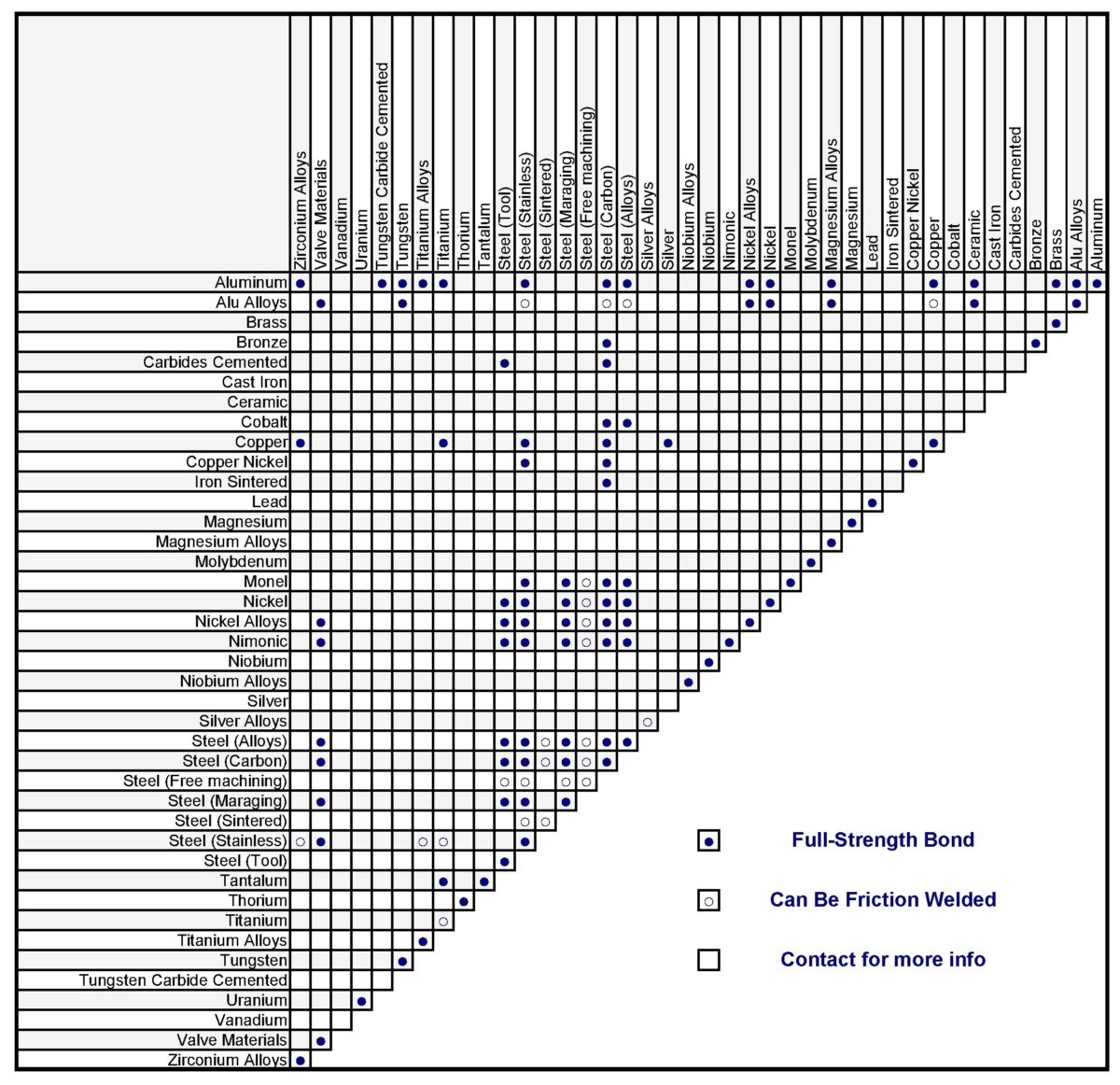
Fiction Welding Services NCT Inc.
Weldability. The welding ability or Weldability is considered as the ability of a material to be welded under the suitably designed conditions of construction imposed in specific to perform satisfactorily in structure and intended service.. Definition . Weldability is the ability of a material to be welded by a process, under given conditions, to perform satisfactorily at the desired service.

Stainless Steel Dissimilar Welding Chart
The American Welding Society defines weldability as, "the capacity of a metal to be welded under the fabrication conditions imposed into a specific, suitably designed structure and to perform satisfactorily in the intended service."
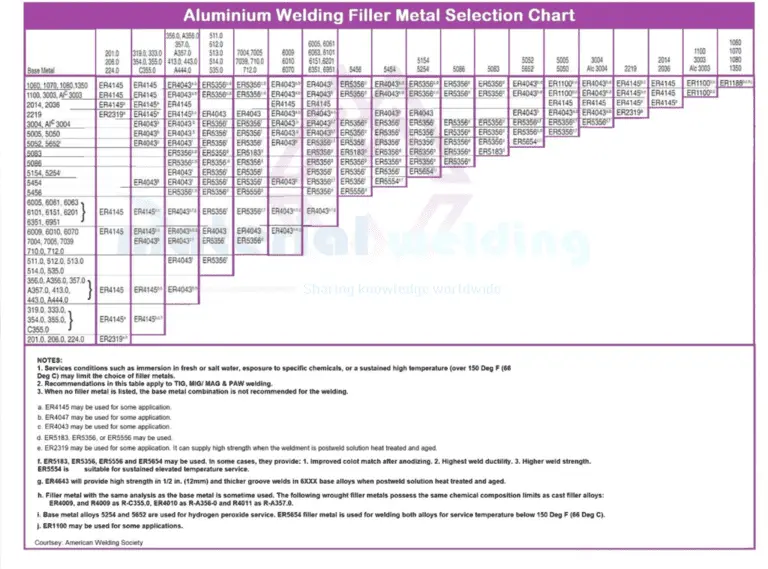
Can you weld 6061 aluminum?
Weldability Chart - Micro Resistance Welding Materials to be Welded (Melting Point oC) Titanium Titanium (1670o) (1670o) (1450o) Stainless Steel (1770o) Platinum (900o) Phosphor Bronze (2470o) Niobium (1450o) Nickel 5 A,E 4 A 4 A 2 A,B 4 E 3 A,B 3 A 4 A,E 1 A,B 2 A,B 2 A